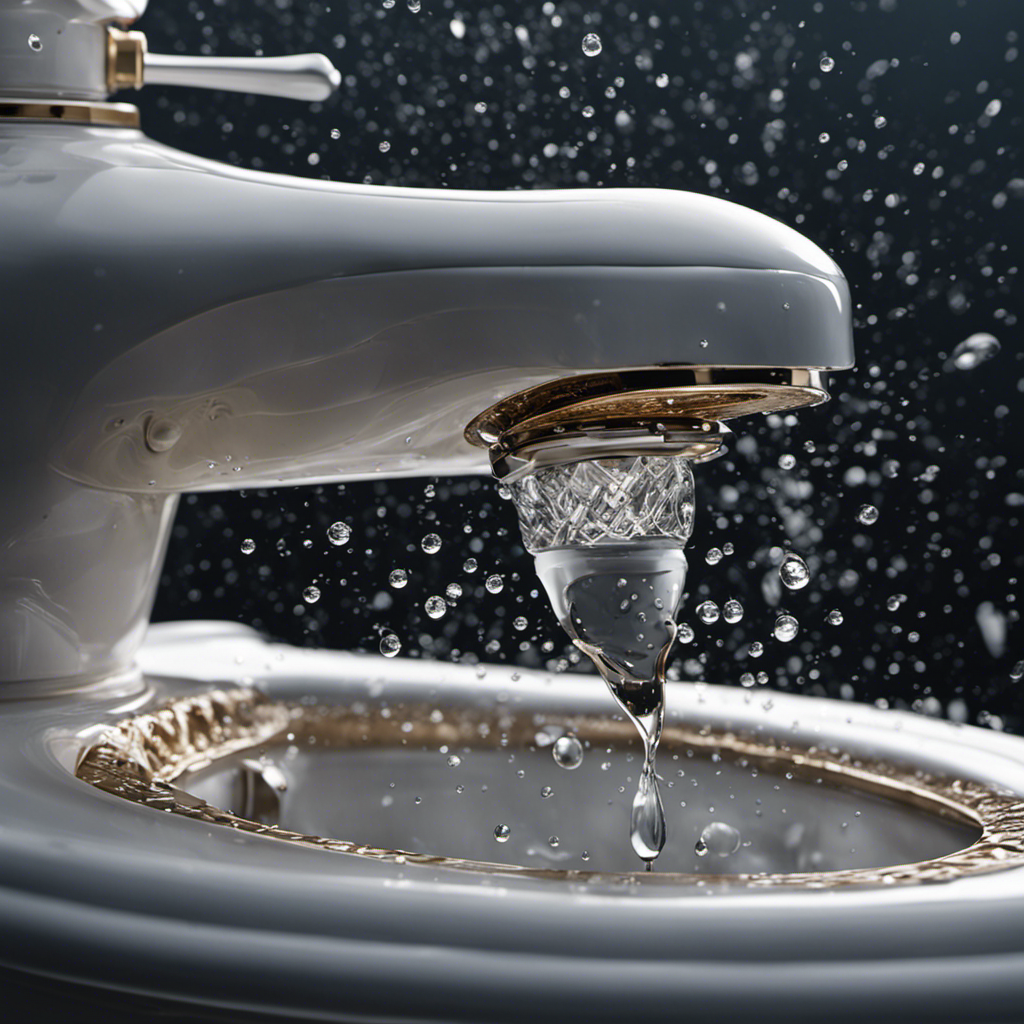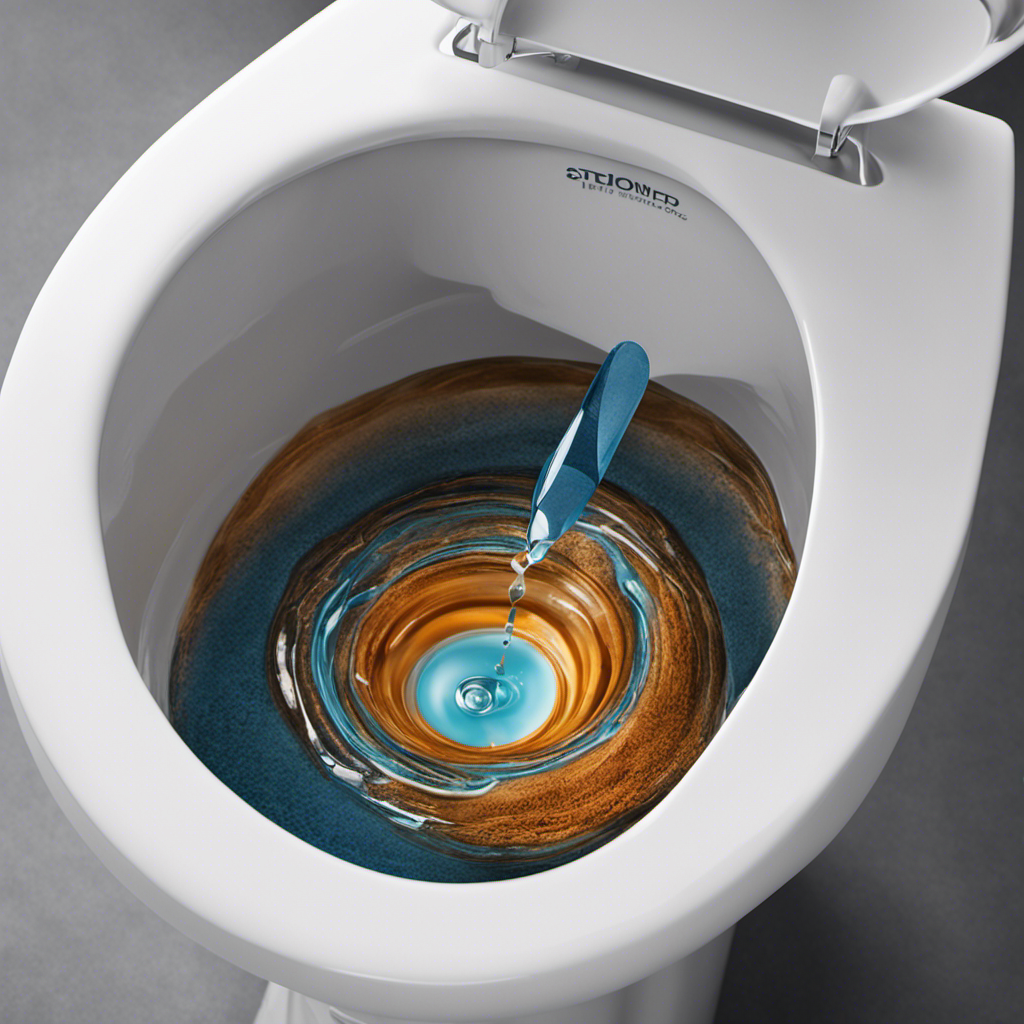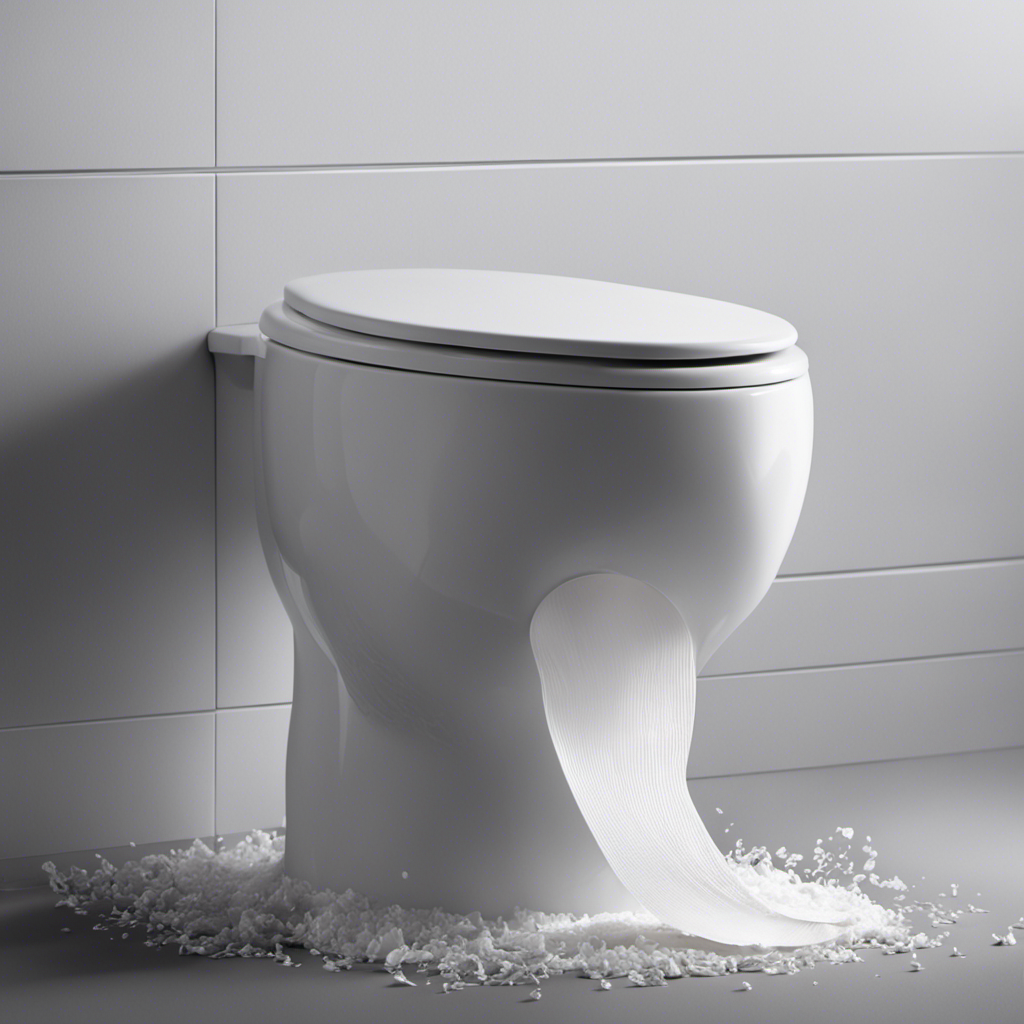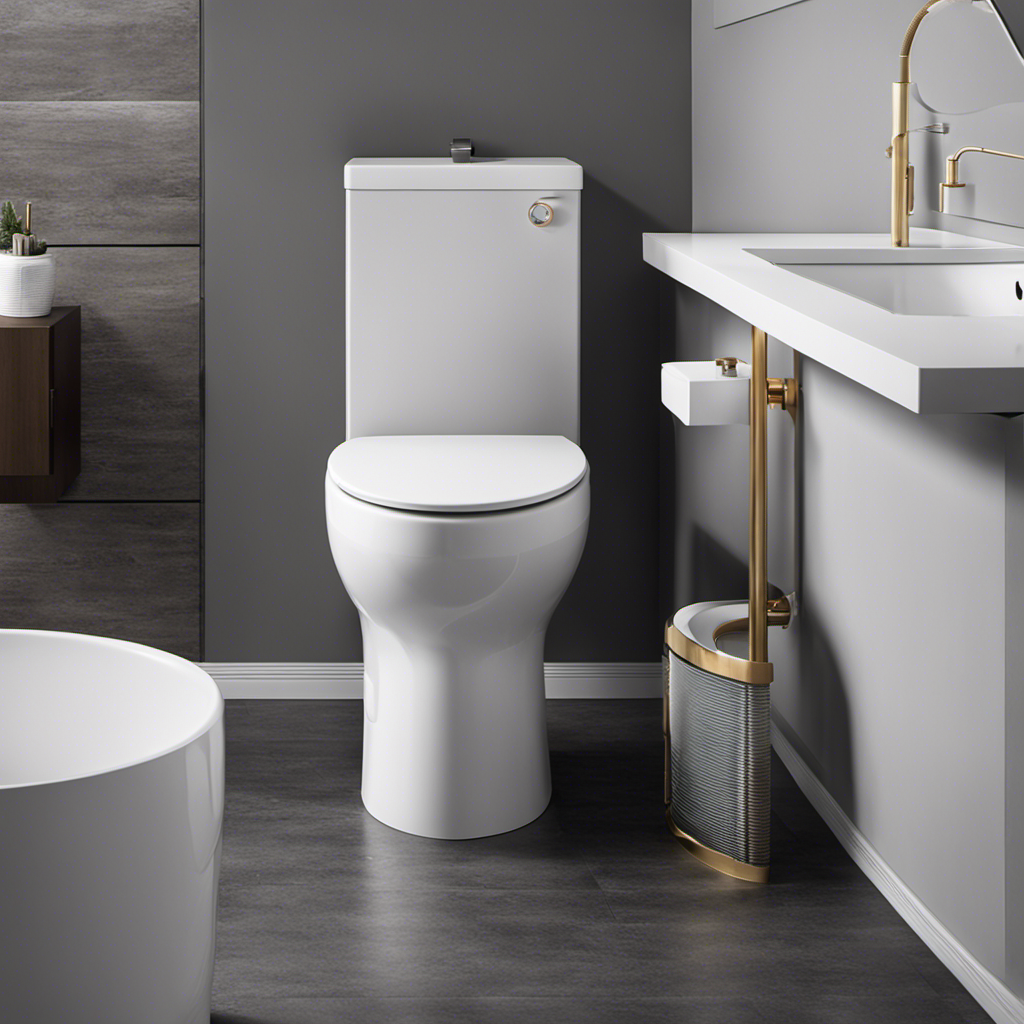I’ve got a theory that we’ve all experienced at some point: a running toilet. It’s that incessant sound that can drive you crazy and waste water like there’s no tomorrow.
But fear not, because I’m here to share my knowledge on how to stop a toilet from running. With a few simple steps and some handy tools, you’ll be able to put an end to that annoying noise and save water at the same time.
So let’s get started, shall we?
Key Takeaways
- Faulty flapper valve and worn-out flapper are common causes of a running toilet.
- Regular toilet maintenance and prompt repairs are important to prevent a running toilet.
- Tools needed to fix a running toilet include an adjustable wrench, pliers, screwdriver, and replacement flapper.
- Steps to stop a running toilet include checking water level, adjusting the float, inspecting and replacing the flapper, troubleshooting the fill valve, and fixing leaks.
Common Causes of a Running Toilet
One of the common causes of a running toilet is a faulty flapper valve. When the flapper valve is not functioning properly, it fails to seal the tank, leading to water continuously flowing into the bowl.
Troubleshooting a running toilet starts with checking the flapper valve for any signs of wear or damage. If the valve appears worn out or cracked, it should be replaced immediately to resolve the issue.
Regular toilet maintenance is crucial to prevent such problems from occurring. By inspecting and maintaining the flapper valve, as well as other components like the fill valve and flush handle, you can ensure the proper functioning of your toilet and avoid unnecessary water wastage.
Don’t neglect regular toilet maintenance to avoid a running toilet.
Identifying a Running Toilet
To identify if your toilet is running, you can listen for any unusual sounds coming from the bathroom. Here are four signs that indicate your toilet may be running:
-
Continuous sound of water: If you hear a constant flow of water even when you haven’t flushed the toilet, it’s a clear sign of a running toilet.
-
Frequent refilling of the tank: If your toilet tank fills up more often than usual, it could be due to a running toilet.
-
Water leaking into the bowl: If you notice water trickling into the bowl without anyone flushing, it’s a sign that your toilet is running.
-
Higher water bills: A sudden increase in your water bill can be an indication of a running toilet, as it continuously wastes water.
To prevent a running toilet, it’s essential to promptly address any repairs or maintenance required. Regularly check for these signs to catch a running toilet early and save water and money.
Tools Needed to Fix a Running Toilet
You’ll need a few tools to fix a continuously flowing toilet.
First, you’ll need an adjustable wrench to loosen and tighten the nuts on the toilet tank. This will allow you to access the inner workings of the toilet.
Next, you’ll need a pair of pliers to adjust the float. The float controls the water level in the tank and can be adjusted by bending the metal rod or turning the adjustment screw.
If adjusting the float doesn’t stop the flow, you may need to replace the flapper. A flapper is a rubber valve that seals the tank and prevents water from constantly flowing into the bowl.
To replace it, you’ll need a new flapper and a screwdriver to remove the old one and install the new one.
With these tools, you’ll be able to fix a running toilet in no time.
Step-By-Step Guide to Stopping a Running Toilet
First, check the water level in the tank of your continuously flowing toilet. If the water level is too high, it may be causing the toilet to run. Here are four steps to troubleshoot and fix the problem:
-
Adjust the float: The float is a small device that controls the water level in the tank. If it is set too high, it can cause the toilet to run. Simply bend the float arm downwards to lower the water level.
-
Check the flapper: The flapper is a rubber valve that seals the tank and prevents water from flowing into the bowl. If it is damaged or worn out, it can cause the toilet to run. Replace the flapper if necessary.
-
Inspect the fill valve: The fill valve is responsible for refilling the tank after each flush. If it is faulty, it may not shut off properly, causing the toilet to run continuously. Replace the fill valve if needed.
-
Look for leaks: Check for any leaks in the tank or around the base of the toilet. Leaks can also cause the toilet to run. Fix any leaks by tightening connections or replacing faulty parts.
Understanding toilet mechanics is essential for troubleshooting and fixing toilet problems. By following these steps, you can successfully stop your toilet from running and save water in the process.
Now, let’s move on to additional tips for preventing toilet running.
Additional Tips for Preventing Toilet Running
Now, let’s explore some more tips to help avoid your toilet from continuously running.
In addition to the step-by-step guide I previously shared, there are a few more water-saving alternatives and eco-friendly toilet solutions you can consider.
Firstly, you can install a dual-flush toilet system that allows you to choose between a full or half flush, depending on the waste. This can significantly reduce water usage.
Another option is to use a toilet tank bank, which is a displacement device that occupies space in the tank, reducing the amount of water needed for each flush.
Additionally, you can replace your old toilet with a low-flow or high-efficiency model. These toilets use less water per flush, helping you conserve water and save money on your water bill.
Frequently Asked Questions
How Much Water Is Wasted by a Running Toilet?
Running toilets waste a significant amount of water, contributing to water scarcity and environmental degradation. It is crucial to address this issue promptly to conserve water and minimize the negative impact on our environment.
Can a Running Toilet Lead to Higher Water Bills?
Certainly! A running toilet can cause higher water bills due to the constant flow of water. Potential causes include a faulty flapper or valve. Troubleshooting steps involve checking for leaks and adjusting the flapper or valve to stop the running.
Will a Running Toilet Cause Damage to the Plumbing System?
Yes, a running toilet can cause damage to the plumbing system. Continuous water flow puts strain on the pipes and can lead to leaks or even burst pipes. It’s important to address toilet running causes and find appropriate solutions to prevent further damage.
How Long Does It Take to Fix a Running Toilet?
On average, it takes about 30 minutes to fix a running toilet. The most common causes are a faulty flapper or fill valve. It’s a simple repair that can save water and money.
Can a Running Toilet Be Fixed Without Any Tools?
Yes, a running toilet can be fixed without any tools. Alternative solutions include adjusting the flapper chain or replacing the flapper. Common causes of a running toilet are a faulty flapper or a loose flapper chain.
Conclusion
Well, there you have it! With these simple steps, you can put an end to that annoying running toilet once and for all.
Armed with the right tools and a little know-how, you can tackle this common household problem with ease.
So don’t let your toilet race like a cheetah on the savannah. Take control, fix that running toilet, and enjoy the peace and quiet of a properly functioning bathroom.
Your wallet and your sanity will thank you!










